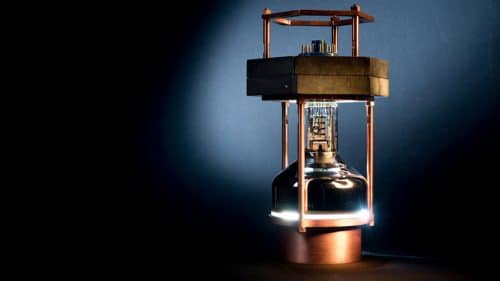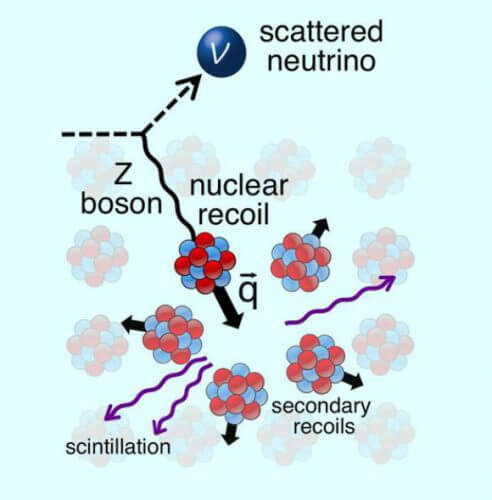One of the most important breakthroughs in 2017 according to Science magazine: Physicists were able to identify the most elusive subatomic particle, the neutrino, an exposure that shed new light on the atomic nucleus.

[Translation by Dr. Nachmani Moshe]
The achievement of the physicists brought to an end a pursuit that lasted about four decades, and it did not require the massive equipment that is usually used to detect the neutrino particles; Instead, the researchers were able to achieve the feat with a portable detector that weighs about as much as a microwave device.
The neutrinos, which are created in certain nuclear processes, react with other matter with such a rare frequency that most of them simply pass through the Earth without being detected by the existing detectors. Nevertheless, from time to time, a neutrino particle hits a neutron particle inside the atom's nucleus, and as a result converts it into a proton-type particle, while it itself becomes a detectable particle such as the electron; Or it simply detaches from the proton or neutron and moves away from the nucleus of the atom. Both of these processes are so rare, that's why the detectors designed to detect them must contain many tons of the target material - physicists have used materials ranging from iron to dry cleaning fluids - just to detect a few of the few of their kind. Anyway, in 1974 theoretical scientists predicted that if the energy of the neutrino was low enough, it would behave like a quantum wave and cause the emission of all the protons and neutrons in the nucleus. Such 'coherent scattering' significantly increases the chance of a reaction between these particles, but the low-energy repulsion of the nucleus will be difficult to detect.
The collaboration of 81 scientists within this project (COHERENT) was able to identify the expected and predicted coherent scattering. The scientists used a detector that weighs about 15 kg and is made of a large crystal of cesium-iodide that contains the element sodium, which flashes when the nuclei of the atoms inside undergo a reaction with neutrinos. They exposed the detector to neutrino particles prepared by a neutron source at the Oak Ridge National Laboratory in Tennessee, particles whose energy was low enough to obtain coherent scattering, and on the other hand high enough to produce measurable recoils.

Small neutrino detectors of this type may one day help monitor nuclear reactors, for example to make sure they are operating in accordance with the non-proliferation treaty, or even in finding even more elusive subatomic particles. By comparing the coherent scattering of neutrinos from different atomic nuclei, physicists will be able to measure nuclear structure in new ways. However, the method also has a drawback: while physicists try to detect particles emitted from the cosmic black matter with the help of particularly sensitive detectors, the coherent scattering of neutrino particles from the sun may be a source of interference in the measurements.
See more on the subject on the science website:
- A neutrino detector in a bottle
- The neutrino puzzle
- Two researchers who separately discovered that neutrinos have mass won the Nobel Prize in Physics
2017 summary on the science website:
- 2017 - the year of the destruction of science in the USA
- The most important discoveries in biology in 2017: precise editing of genes; A genetic cure for cancer
- Neutron star merger - breakthrough of the year according to SCIENCE magazine
- Drought, hurricanes and Trump: 2017 summary in the environment
- 2017 in space: the chairman of the space agency is optimistic about the communication satellite program and the SpaceIL project
- 2017: SpaceX's incredible year
- 2017 in space - the end of the Cassini mission to Saturn
